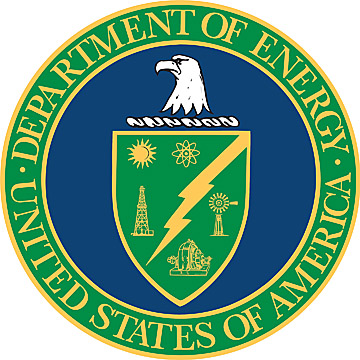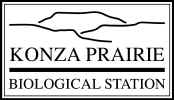 Rainfall Manipulation Plot Study
Rainfall Manipulation Plot Study
Shelter Design
The rainfall manipulation shelters are constructed from galvanized tubular steel, and are modifications of a commercial greenhouse design (‘Rainbow Plus’, Stuppy Greenhouse Manufacturing, Inc., North Kansas City, MO, USA). Each shelter covers an area of 9.14 x 14.0 m (128 m2), with an average eave height of 1.8 m. The shelters exclude natural rainfall from a 6 x 6 m core plot used for measurements of plant and soil responses to altered rainfall regimes. The frames are anchored in 1.2 m deep concrete footings and braced with external wires for stability.
Experimental plots are surrounded by a buried vertical perimeter barrier of galvanized sheet metal; enclosing a 7.6 x 7.6 m area 10 cm above the soil surface to 1.2 m depth, and extended 10 cm above the soil surface. The barrier minimizes surface and subsoil water flow and root/rhizome penetration from outside the plot. Disturbance of this core plot was carefully avoided during shelter construction.
The shelter roofs are covered by a single layer of clear, 6 mil, 3-year UV-transparent polyethylene greenhouse film which attaches to the shelter with a wire clip system. Shelter sides and ends remain open to maximize air movement and minimize temperature and relative humidity artifacts. The poly sheets are installed each April and removed in October, allowing manipulation of growing season rainfall.
Natural rainfall for experimental application to the plots is collected off the roof via gutter downspouts connected to two 4,164 L polyethylene storage tanks (model 171, Snyder Industries, Lincoln, NE, USA). Total storage capacity is about 10 cm of rainfall. Black tanks were chosen to minimize light penetration and subsequent algae growth.
The
irrigation
system consists of 13 eave-height irrigation nozzles arranged in a
square grid that irrigates an 86.3 m2 area centered on the core
measurement
plot. The grid contains one 891.5 L/h high volume, low
drift
nozzle (Senninger Irrigation Inc.,
Orlando, FL, USA) surrounded by twelve 98.0 L/h nozzles. This nozzle
configuration
provides even water distribution across the core measurement
plot.
Each nozzle is pressure regulated to 41.37 KPa, allowing a maximum
application
rate of 2,068 L/h, or about 2.5 cm/h. Water is pumped from the tanks to
the nozzles by a cast-iron self-priming centrifugal pump powered by a
0.37
kW single-phase electric motor (model 1P852, Dayton Electric
Manufacturing
Co., Niles, IL, USA) controlled by an electronic timer (Intermatic
ET100C, Intermatic
Incorporated, Spring Grove, IL, USA), allowing manual or
programmable
pump operation. Rainfall application volumes are measured with a
positive
displacement meter (FTB 6207, Omega
Engineering
Inc., Stamford, CT, USA). The irrigation system is plumbed
with
Schedule 40 PVC pipes and threaded fittings for easy maintenance and
winter
dismantling. All shelters have 110V and 220V AC electricity to power irrigation pumps, data loggers, backup power
supplies,
and other accessories.



